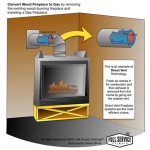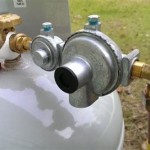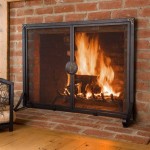Instead, focus on providing the reader with the necessary information.
Fireplace Cover-Up Ideas: Revitalizing Your Hearth
Fireplaces, often the focal point of a room, can sometimes become outdated, unused, or simply clash with a new design aesthetic. Rather than undertaking a costly and disruptive removal process, covering up an existing fireplace presents a practical and aesthetically pleasing alternative. This article explores various fireplace cover-up ideas, detailing methods to revitalize the hearth while minimizing expenses and construction.
Understanding the Scope of the Project
Before embarking on any fireplace cover-up project, it is crucial to assess the existing fireplace's condition and functionality. Determine whether the fireplace is still usable or if it has been permanently decommissioned. If the fireplace is functional, any cover-up must adhere to safety regulations and allow for future use, if desired. Structural integrity should also be examined to ensure the existing fireplace can support the weight of any applied materials. Consider consulting with a qualified contractor or fireplace specialist to assess potential challenges and ensure compliance with local building codes.
The style and design of the existing fireplace must be considered when planning a cover-up. The existing materials, such as brick, stone, or tile, will influence the selection of covering materials. The overall aesthetic of the room and the desired end result are also important factors. A modern design scheme might benefit from a sleek, minimalist cover-up, while a more traditional setting may call for a rustic or ornate approach.
Budgetary constraints will significantly impact the scope and feasibility of the cover-up project. Simple solutions, such as painting or adding decorative elements, are more cost-effective than extensive renovations involving new materials and construction. Prioritizing desired features and setting a realistic budget will help guide the decision-making process.
Creative Cover-Up Techniques
Several techniques can be employed to cover up a fireplace, each offering varying degrees of visual transformation and structural change.
Painting: A straightforward and inexpensive option involves painting the existing fireplace. This can dramatically alter the appearance of brick, stone, or tile, providing a fresh and updated look. Select a paint specifically designed for masonry or stone to ensure proper adhesion and durability. Consider using a primer to create a smooth surface and prevent the existing material from bleeding through. Paint color choices should complement the overall color palette of the room. This method is best suited for fireplaces in good structural condition and when the primary goal is to refresh the aesthetic rather than conceal significant imperfections.
Adding a Decorative Screen or Mantel: A decorative screen or a new mantel can effectively conceal the firebox opening and provide a visual focal point. Screens can be crafted from various materials, including metal, wood, or glass, and are available in a wide range of styles and designs. A new mantel can also significantly alter the appearance of the fireplace, adding a touch of elegance or rustic charm. This option is particularly suitable for fireplaces that are no longer in use but are structurally sound. The screen or mantel should be properly secured to the fireplace to ensure stability and prevent accidents.
Creating a Faux Fireplace: For a more substantial transformation, consider creating a faux fireplace. This involves building a framework around the existing fireplace and cladding it with new materials. This technique allows for complete customization of the fireplace's appearance, enabling the creation of a modern, traditional, or eclectic design. Materials commonly used for faux fireplaces include wood, drywall, stone veneer, and tile. This option requires more extensive construction and may necessitate the involvement of a contractor or experienced DIYer.
Installing a Built-In Unit: Transforming the fireplace into a built-in unit provides both aesthetic appeal and functional storage. Shelves, cabinets, or a combination of both can be constructed around the existing fireplace, creating a seamless and integrated design. This option is ideal for maximizing space and adding storage to the room. The built-in unit can be constructed from wood, plywood, or other materials and should be painted or stained to complement the surrounding decor. This project requires careful planning and precise execution to ensure a professional and aesthetically pleasing result.
Material Selection Considerations
The choice of materials for a fireplace cover-up significantly impacts the overall aesthetic and durability of the project. Each material offers unique characteristics and benefits, and the selection should be based on the desired style, budget, and level of maintenance.
Wood: Wood is a versatile and readily available material that can be used for various cover-up techniques, including framing, cladding, and creating mantels. It offers a natural and warm aesthetic and can be easily painted or stained to match any decor. However, wood is susceptible to moisture damage and requires regular maintenance to prevent rot and decay. When using wood near a functional fireplace, ensure it is adequately protected from heat and sparks.
Stone Veneer: Stone veneer provides the look and feel of natural stone without the weight and expense. It is a durable and low-maintenance material that is resistant to heat and moisture. Stone veneer is available in a wide range of colors, textures, and styles, making it suitable for various design aesthetics. It is typically installed using mortar and requires careful application to ensure a professional and seamless finish.
Tile: Tile is a durable and versatile material that can be used to cover the entire fireplace or create decorative accents. It is available in a vast array of colors, patterns, and sizes, offering endless design possibilities. Tile is resistant to heat and moisture, making it a suitable option for functional fireplaces. It is typically installed using thin-set mortar and requires grouting to seal the joints. Proper installation is crucial to prevent cracks and water damage.
Drywall: Drywall is a cost-effective and lightweight material that can be used to create a smooth and seamless surface for painting or wallpapering. It is typically used for framing and cladding faux fireplaces or built-in units. Drywall is not resistant to moisture and should be protected from water damage. It requires taping, mudding, and sanding to create a smooth finish before painting or wallpapering.
Metal: Metal screens or accents can add a modern and industrial touch to a fireplace cover-up. Metal is durable and heat-resistant, making it a suitable option for functional fireplaces. It is available in various finishes, including brushed steel, stainless steel, and powder-coated colors. Metal accents can be incorporated into mantels, screens, or built-in units to create a unique and eye-catching design.

How I Created An Insulated Fireplace Cover With Pallet Wood Diy Doors

Before After 15 Fireplace Surrounds Made Over Sheknows

Your Home Fireplace Cover Diy Brick Makeover
:max_bytes(150000):strip_icc()/MadetobeaMommaAfter-5bb247914cedfd0026314d0c.jpg?strip=all)
Before And After Fireplace Makeovers

7 Modern Stylish Ideas To Put Your Empty Fireplace Into Use

3 Easy Boarded Up Fireplace Ideas Direct Fireplaces

36 Fireplace Decor Ideas Modern Mantel

Diy Fireplace Makeover Wood Slat

30 Cozy Fireplace Mantel Ideas And Design Inspiration Purewow

7 Unique Ways To Remodel Decorate Your Unused Fireplace
Related Posts








